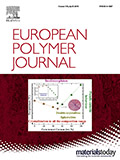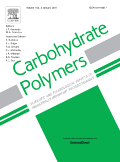The webinar "BIOPLASTICS for food packaging: better biobased or biodegradable ?" took place 11 June 2018 at 9.00 AM CEST.
Content:
According to the European Bioplastics organization, BIOPLASTICS can be defined as plastics based on renewable resources (biobased) or as plastics which are biodegradable and/or compostable. Sometimes, these two features are present together in special products but, more often, we face it as an alternative.
Such an alternative is also animating a strong debate in the field of packaging materials and technology.
Somewhere, biodegradable polymers are considered as a solution to waste-disposal problems associated with synthetic plastics. Because of their lack of biodegradability, petroleum-based products are said responsible to significant waste disposal problems and environment pollution. Biodegradability, indeed, is the main reasons for the interest in biopolymers, because it answers to the need of environmental friendly disposal scenarios.
At the same time, on opposite side, converting a solid material to a gas via biodegradation or composting is considered not sustainable, being much better to recycle or recover the feedstock energy, in a view of closing the resource loop and make the most out of the packaging materials. Even landfill mining for recovery of used packaging material is seen more sustainable than biodegradation.
In this Webinar, precise definitions of biobased-products, bioplastics, biopolymers, compostability, biodegradability will be provided, together with an overview of the main BIOPLASTICS, their most common limitations, and possible use in food packaging. The trends and the interest of the packaging industry regarding the use of bioplastics will be, tentatively, proposed according to statistical data and forecasting from scientists and opinion leaders. Finally, some hints for possible positive research programs, addressed to more sustainable packaging, will be suggested.
Presenter: Full professor of food science and technology, Luciano Piergiovanni, was born in 1950, he currently teaches courses of “Food Packaging and Food Logistics”, “Sustainability of Food Products and Distribution Systems” and “Quality and Safety of Biotechnological Foods”. He has been visiting professor in the Universities of San Paolo (Brasil), Santafè de Bogotà (Colombia) and since 2013 is Visiting Professor of Tianjin University of science and Technology - TUST, China. His main fields of research are in Food packaging, Active Packaging, Modified Atmosphere Packaging, Shelf life Studies. He has authored three text books on food packaging, 6 chapters in international text books, 7 patents in the packaging field and more than 250 works among scientific publications, communications to conferences, technical and popular articles. He coordinated research teams in projects sponsored by National Institutions (CNR, MIUR) and European Union. He is the President of the Italian Scientific Group for Food Packaging (GSICA) from 1999 and is member of the Editorial Boards of the following Scientific Journals: Packaging Technology and Science, Food Packaging and Shelf Life, Croatian Journal of Food Science and Technology.
The presenter, in collaboration with ISEKI & Elsevier, are pleased to offer you access to a selected number of articles published by the webinar presenter. Links to the articles are to be found below:
Stefano Gazzotti, Hermes Farina, Giordano Lesma, Riccardo Rampazzo, Luciano Piergiovanni, Marco Aldo Ortenzi, Alessandra Silvani. Polylactide/cellulose nanocrystals: The in situ polymerization approach to improved nanocomposites, European Polymer Journal, Volume 94, 2017, Pages 173-184, ISSN 0014-3057,https://doi.org/10.1016/j.eurpolymj.2017.07.014.

Fei Li, Paolo Biagioni, Marco Finazzi, Silvia Tavazzi, Luciano Piergiovanni,Tunable green oxygen barrier through layer-by-layer self-assembly of chitosan and cellulose nanocrystals, Carbohydrate Polymers, Volume 92, Issue 2, 2013, Pages 2128-2134, ISSN 0144-8617,https://doi.org/10.1016/j.carbpol.2012.11.091.

